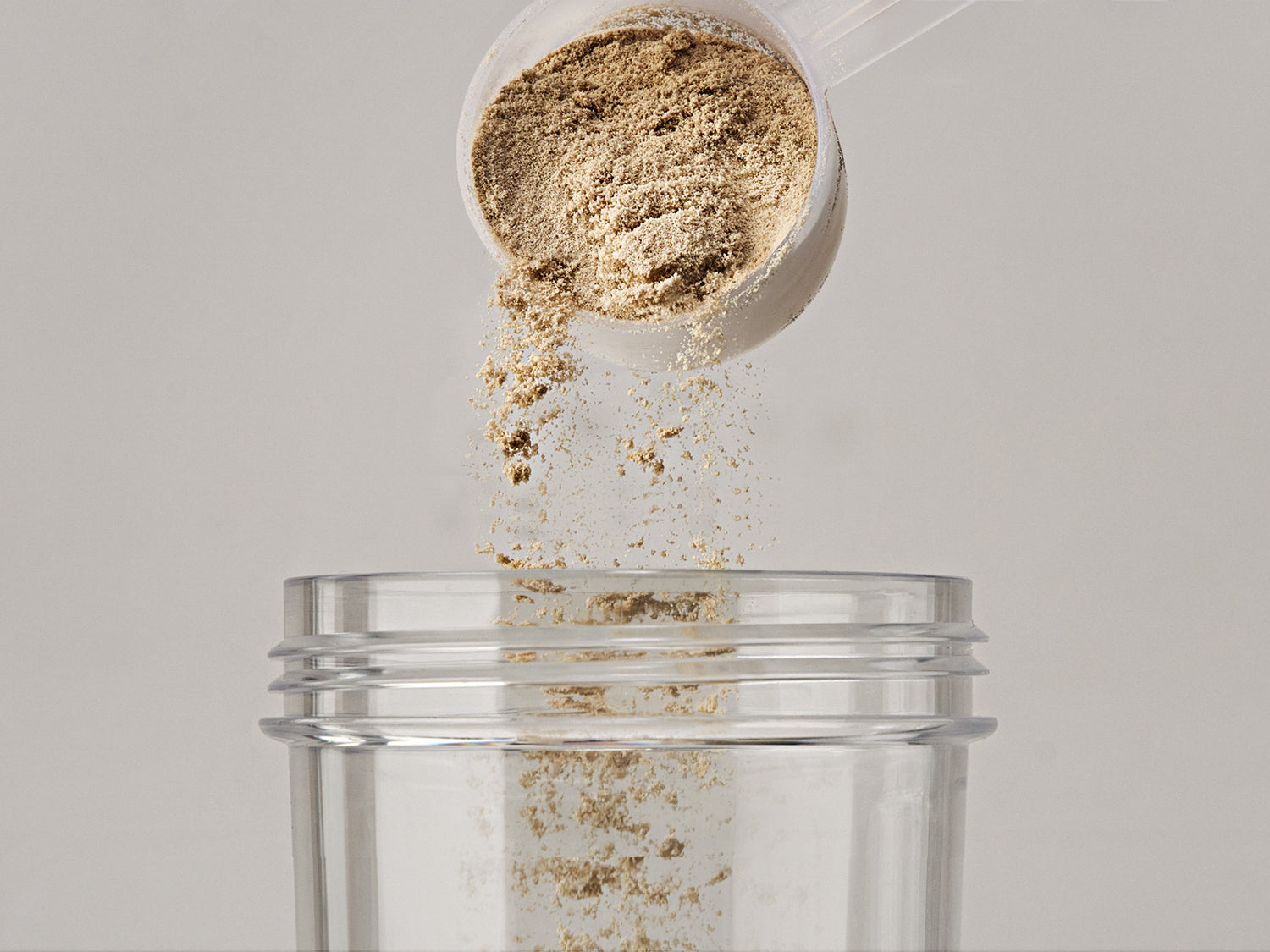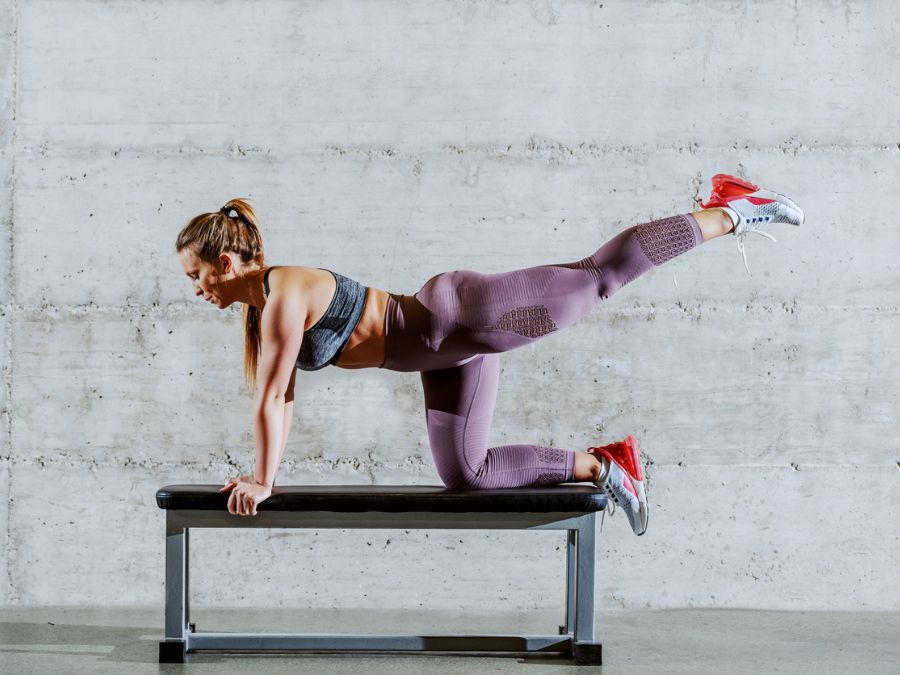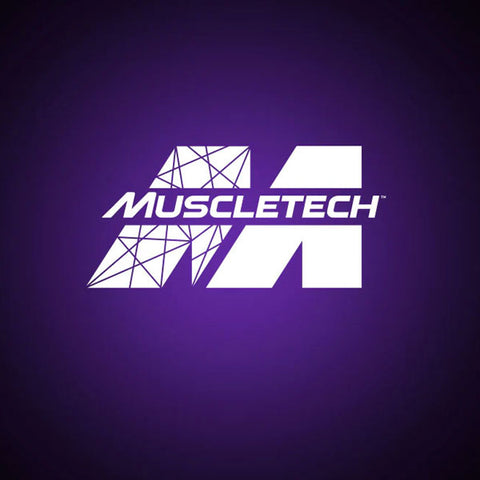Call it quadruped hip extension, bent-leg kickback, or donkey kicks, this is an exercise to strengthen your glutes and core, helping you to improve your overall performance.
These exercises aid in getting your buttocks and hips in shape. Strong glutes not only support your spine and trunk against injury, but also hold your upper body weight. If you are interested in fab and shapely legs, this is an exercise to hang onto.
Moreover, it is easy to learn and can be performed without fancy equipment making it ideal for home exercises. With a few modifications, the donkey kick can prove to be a great workout for advanced exercisers.
Let's get straight into the topic!
Which Muscles Are Involved?
Donkey kicks primarily target the glutes, but they are very useful for strengthening several areas of the lower body, including:
Gluteus maximus: This is the largest glute muscle. It’s responsible for hip strength. Strong glutes can help mitigate hip pain by providing better support and stability to the hip joint.
Gluteus medius and gluteus minimus: These smaller glute muscles are located on the sides of the hip. They help with hip abduction as well as pelvic stability.
Hamstrings: These muscles sit at the back of the thigh and help with activities like walking, running, climbing stairs, sitting down, standing up, and bending over.
Lower back: The lower back muscles help your spine during donkey kicks, preventing excessive arching or rounding of your lower back.
This helps you to maintain an upright posture in everyday life, as well as help with things like bending over to tie your shoes, getting in and out of a car, or reaching for items on a high shelf.
Core muscles: Although not the main focus, the core muscles, including the transverse abdominis and obliques, are engaged to stabilize the body and maintain proper form when you do donkey kicks.
Strengthening these muscles helps you to stay balanced when you reach for items or even shift your weight from one foot to another.
Now that we know the benefits of donkey kicks, let’s try to take a peek into some variations and alternatives.
How to Perform Donkey Kicks?
It is important to find the proper way to do this exercise to avoid any injury. Let’s break it down:
- Start by kneeling on all fours, keeping your shoulders directly over your hands while your hips are over your knees. Keep your arms straight, and hands about shoulder-width apart, fingers pointing forward. Lengthen your neck and tuck your chin.
- Ensure your lumber spine is neutral (slightly arched), keep your core tight and don’t arch your back.
- While keeping your knee bent, extend your hip, lift one leg out and behind you, squeezing your glutes to lift your foot towards the sky as if you are stamping the ceiling with the bottom of your shoe.
- Keep your hips/anterior pelvis pointing straight down at the floor (Do not hyperextend your lower back).
- Lower your leg back down and repeat on the same side or alternate legs as you feel comfortable.
- Inhale as you lower the leg back down.
- Repeat on the other side or complete all your reps on one leg before switching to the other side.
- You can make it harder by wearing weights on your ankle.
Also Read: The Ultimate Push Pull Legs Routine for Ultimate Mass Gains
Donkey Kick Variations
To make the most of donkey kicks there are several variations and alternatives to keep your workouts interesting and productive. Here are some of these variations:
1. Straight Leg Donkey Kicks
How to:
- Kneel on your hands and knees; hands under shoulders, knees under hips, back flat, abdomen pulling in and shoulders pulling down. Look forward and keep your hands below the shoulders.
- Bend your elbows and place them under your shoulders.
- Pull the shoulders down, lengthen your spine, engaging your core.
- To start this exercise, extend your right leg straight behind you, with the toes touching the floor.
- Squeeze your glutes and hamstrings to lift your leg off the floor. Keep the leg extended and kick it up, while keeping the back in natural shape and your shoulders pulling down.
- Do as many sets as you are comfortable to start with.
- Switch legs and repeat.
Have you read our blog on back pain exercises?
2. Band Leg Extension Donkey Kick
How to:
- Using a band can generate enough resistance to replace ankle weights. Move to this variation after straight leg donkey kicks are no longer challenging enough.
Procedure:
- Kneel on all fours, so your shoulders are directly over your hands, and your hips are over your knees. Place a resistance band across the soles of your feet and hold the other end under your hands.
- Brace your core, tuck your chin in, and lengthen your neck.
- Keeping your leg bent, drive your foot back and up toward the ceiling, taking care not to hyperextend your lumbar spine.
- Return to the starting position and repeat.
- Do the same number of reps on both legs.
3. Resistance Band Donkey Kick
How to:
- Place a resistance band right above your knees on the leg that you want to start with.
- Kneel on all fours, so your shoulders are directly over your hands, and your hips are over your knees.
- Brace your core, tuck your chin in, and lengthen your neck.
- Keeping your leg bent to 90 degrees, lift your right knee off the floor in line with your hip. This is the starting position.
- Flex your foot and kick your right leg up towards the ceiling. Do not let your lower back arch.
- Keep your lower back flat, so you work your glutes and hamstrings and do not strain your lower back. Keep your shoulders down and torso still.
- Pause for a second, squeeze your glutes, and lower your right knee back to the starting position while keeping the rest of your body still.
- Do this 10-15 times before switching legs.
Read about bodybuilding for beginners.
4. Fire Hydrant With Resistance Band
How to:
- Wrap a loop resistance band just above your knees.
- Kneel on all fours: hands under shoulders, knees under hips, back flat, abdominals pulling in, and shoulders pulling down.
- To start with, lift your right leg straight off the floor in line with your hip.
- Bend your knee and move your leg out to the side and up.
- Keep your shoulders down and bring more weight.
- Pause for a moment and squeeze your outer hip, then bring your right leg back to the starting position behind your hip.
- Do not let your torso move, lean, or sway throughout the exercise.
- Do this 10 times before switching legs.
5. Smith Machine Donkey Kick
If you’re looking to grow the size of your glute muscles, this variation can help. A lot of people are very quick to dismiss the Smith machine as non-functional. However, the Smith machine is just another training tool that you can choose to use or ignore according to your workout preferences and goals.
How to:
- Get on all fours. Ensure your right foot’s arch is under the bar of the Smith machine, as it forms a 90-degree angle with your right knee.
- Maintain one to two feet in front of the machine.
- Engage your glutes and hamstrings while keeping your core tight. Use these muscles to initiate the movement.
- Pushing with your glute through the arch of your foot, extend your knee in a slow and
controlled motion. - Return to the starting position and complete 10 to 12 reps for 2-4 sets on each leg.
6. Hip Thrust
Hip thrusts are a popular glute exercise that can be done using nothing more than your body weight for resistance. For an intense workout, try hip thrusts with a resistance band around your knees to increase glute activation.
How to:
- Lie on your back with your legs bent and feet flat on the floor. Place your arms on the floor by your sides.
- Drive your feet into the floor and push your hips up toward the ceiling. Your knees, hips, and shoulders should form a straight line.
- Lower your buttocks back down to the floor and repeat.
- Make this exercise harder by holding a weight on your hips, using one leg at a time, or placing your feet or shoulders on a step or bench to increase your range of motion.
7. Reverse Lunge Kickback
How to:
- Stand tall with your legs shoulder-width apart, knees soft, shoulders rolled back, spine long, abdominals in, and head in line with your spine.
- Take a step back with your right leg, bend both knees, and lower your body into a reverse lunge position by bending your knees to 90-degree angles (front knee over ankle, back knee under hip). Make sure your knees track over the centers of your feet and do not roll in.
- Straighten your legs and kick the right leg straight behind you without arching your lower back. Push into your front glute and squeeze your back glute.
- Bend your knees back down into the reverse lunge position with control.
- Do this 10 times before switching legs.
Donkey Kick Alternatives
Now that we know the benefits of the donkey kick back and its variations, lets see some alternatives as well to this great exercise:
Kettlebell Swings
Kettlebell swings are more dynamic and intense than donkey kicks if done correctly. They can be a substitute to donkey kicks as a safer and effective exercise to hammer glutes and hamstrings. The swing is a fundamental kettlebell exercise that’s good for almost everybody’s body.
Single-leg Romanian Deadlift
Single-leg Romanian deadlifts, like donkey kicks, work one leg at a time. However, because they’re done standing, you’ll need to work harder to maintain your balance. This increases glute activation and means your hip stabilizers are more involved.
Stability Ball Hip Lift and Leg Curl
Like donkey kicks, the stability ball hip lift and leg curl is a great bodyweight glute and hamstring exercise. However, it’s considerably more challenging.
Procedure:
- Lie on your back with your legs straight and feet resting on a stability ball. Place your hands on the floor by your side for balance.
- Push your heels into the ball to lift your butt off the floor so your body is straight.
- Next, bend your legs and curl the ball in toward you. Push your hips up to the ceiling as you roll the ball in.
- Push the ball away, so your legs are straight, and then lower your hips back down to the floor.
- That’s one rep – keep going!
What makes Donkey Kicks appealing?
- No equipment is required for this exercise, this is the perfect excuse-free glute exercise. All you need to do donkey kicks is a little space and something to kneel on, such as an exercise mat or folded towel.
- Donkey kicks are very straightforward glute exercises. Most people should master this move within a few minutes. As such, it’s ideal for beginners.
- While your glutes are the target muscle during donkey kicks, they aren’t under a whole lot of tension. This is a low load exercise and can be tailored specifically based on your stamina. So, if you are just starting out on your fitness journey or want a low-stress glute workout, this could be the exercise for you.
- To master this exercise, you need to engage your core to stabilize your lumbar spine. Lifting just one leg means you’ll need to brace to keep your hips stationary. Using your core like this is an excellent way to master bracing before attempting more advanced exercises.
Common Mistakes to Avoid
- Some exercisers use an extended range of movement for donkey kicks, raising their foot far too high. Most of this additional movement comes from the spine and not the hip. The extra movement does nothing for the glutes but increases the risk of injury. Don’t do it!
- With limited resistance available, most exercisers soon find that high reps are the only way to make this move sufficiently challenging, and that’s an inefficient use of your training time.
- When you curve your lower back, you won't be able to completely stretch into the glute, which makes the technique ineffective for your buttocks. This position also puts the core 'off,' increasing the risk of spinal damage, especially if you're doing the kicks with weight or a stronger resistance.
TL;DR
Donkey kicks is a convenient and effective exercise that is a common feature of group exercise classes. There is a reason for their popularity is their effectiveness. They’re the perfect excuse-free way to develop your glutes and hamstrings and are ideal for home workouts.
However, like any exercise, donkey kicks will gradually lose their potency if you do them too often. With limited resistance available, most exercisers soon find that high reps are the only way to make this move sufficiently challenging. To get the most out of this exercise, use the variations and alternatives to continue making progress.
References:
https://www.issaonline.com/blog/post/donkey-kicks-benefits-and-variations-for-strong-glutes
https://fitcarrots.com/exercise/short-resistance-bands/butt-donkey-kick-with-short-resistance-band/
https://www.skimble.com/exercises/41200-resitance-band-fire-hydrants-how-to-do-exercise
Read Our Top Blogs:




